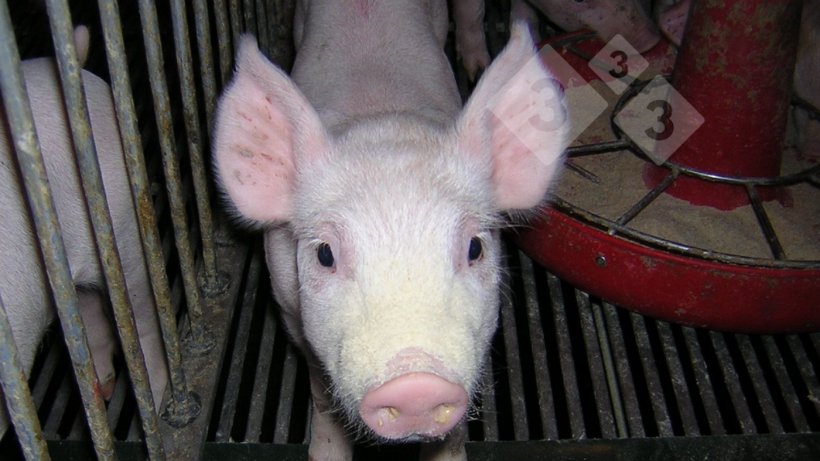Background
The post-weaning period of a weaned piglet can be divided in two different physiological phases: acute phase (first week post-weaning) and maturation phase (from week 2 to week 5-6 post-weaning). During the acute phase pigs show a low feed intake, growth stasis, impaired stomach, and intestinal function (and thus a maldigestion and malabsorption), and intestinal microbiota dysbiosis (and thus a reduced fermentation). On the other hand, during the maturation phase feed intake and growth are restored through an improvement of the gastrointestinal function.

The nutritional interventions used in post-weaning diets should go hand in hand with the different physiological stages: the focus during the acute phase should be on gut health by including highly digestible and palatable ingredients, functional amino acids and coarse particle ingredients while reducing the acid-binding capacity, the fermentable to inert fibre ratio (<1) and the protein content of the diet; while the focus during the maturation phase should be on keeping piglets healthy and stimulate growth performance by increasing the protein content (and the standardized ileal digestible lysine to net energy ratio, SID Lys:NE ratio), including medium-chain fatty acids as fat source and allowing a wider fermentable to inert fibre ratio (>1.5).

The role of crude protein level and quality
High crude protein (CP) levels are known to be a major risk factor for post-weaning diarrhoea in weaned piglets (Heo et al. 2008). This is because the fermentation of undigested CP in the end of the small intestine and the colon may lead to the proliferation of pathogenic bacteria and production of harmful products such as biogenic amines, ammonia among others, all leading to diarrhoea. On the other hand, deaminating and excreting the excess of protein through urine has an additional energy cost for the piglet.
A critical point when formulating diets for young animals is that most of the digestibility data have been obtained in standard digestibility studies in which adult animals are used. This is critical when using protein-rich ingredients in animals with an immature gastrointestinal tract functionality. It has been previously reported (Batal and Parsons, 2002 a,b,) that the metabolizable energy (MEn) and amino acid (AA) digestibility of a corn-SBM (soybean meal) diet increase substantially with age (0 to 21 d) due to changes in the digestibility of SBM. On a subsequent study (Batal and Parsons, 2003), the digestible lysine and MEn value of regular SBM, soy-protein concentrate, soy-protein isolate and casein evolved differently by age.
Another critical factor that seems to gain more interest among the scientific papers is the rate of digestion for CP-rich sources. In a study by Montoya et al. (2018), the rate of digested protein entering the small intestine (i.e., leaving the stomach) strongly predicted the rate of AA digestibility and the location of AA absorption in the small intestine. These results are suggesting that the digestion and absorption of highly-digestible protein primarily occurs in the first half of the small intestine, while poorly digestible proteins are digested and absorbed throughout the entire small intestine with more risk of having undigestible CP at the end of the ileum.
In a recent PhD thesis conducted at Wageningen University (Chen, 2017), differences in CP digestibility along the small intestine in pigs were reported (Table 1). The results of this thesis suggested that dried plasma protein (DPP) is a fast and highly digestible protein source, since the CP digestibility of the diet containing DPP was 59% in the proximal small intestine, as compared to a diet with soybean meal, whose CP digestion was only of 26%. Interestingly, closer digestibility coefficients between both diets were reached at the end of the ileum for SBM diet (74%) and at the 3rd segment of the small intestine for the DPP diet (76%). Overall, these results suggest that future CP/AA digestibility determination studies should be conducted in young piglets and measurements of protein kinetics (measuring CP/AA digestibility along the small intestine) should be included. This is in contrast with standard digestibility protocols that measure CP and AA digestibility only at the end of the ileum using growing pigs models.
Table 1. Apparent digestibility of CP (%) of experimental diets containing a single protein source along the small intestine of growing pigs (from Chen, PhD, 2017)
| % | SBM | Dried porcine plasma protein |
|---|---|---|
| 1st segment Small intestine | 11.9 | 57.0 |
| 2nd segment Small intestine | 25.8 | 59.0 |
| 3rd segment Small intestine | 54.8 | 75.6 |
| 4th segment Small intestine | 74.4 | 86.6 |
| Faecal | 83.4 | 95.9 |




